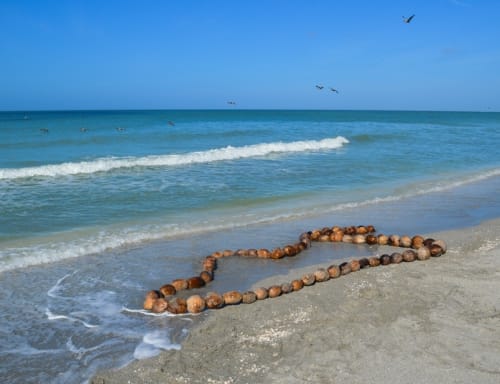By Minouk Lim
A disappearance from 2015 obsesses me. It concerns a shroud that was supposed to embrace my grandmother for 100 years of solitude, but ended up going missing. Someone stole my grandmother’s grave clothes, which she had prepared herself for her funeral. Why would someone steal another person’s shroud?
My imagination and research were fuelled by this event: I learned that Korean funeral clothes underwent a total transformation during the period of Japanese colonial occupation (1910–45), which gave rise to the current ‘traditional’ hemp shroud. As the Japanese Empire shifted the focus of its strategy from military oppression towards cultural assimilation, it imposed funeral regulations that banned silk and established hemp, which was historically used for prison uniforms, as the fabric for shrouds and mourning attire. In doing so, it summoned a symbol of sin from Korean Confucian customs and cast it upon both the living and the dead. Such is the origin of this so-called tradition, which embodies two ironies. One is that hemp became a rare and high-priced commodity following the Cannabis Control Act of 1976; this transformed the procurement of the shroud into a gesture of filial piety – one that persists to this day. The other irony relates to research results showing that hemp has good antiseptic properties and moisture absorption; therefore, bodies buried in hemp shrouds are more likely to dry out than rot, becoming hwanggols or ‘golden bones’. According to yin (burial-related) feng shui, these golden bones bring prosperity.
However, I want to pay my respects to individuals who manage to maintain almost-forgotten traditional culture, plowing through the vestiges of colonialism – as in cases where the deceased wear the clothes they most cherished while alive. This is said to be the pre-colonial custom. Some people, for instance, would wear their wedding clothes as grave clothes. The Western saying ‘clothes make the man’ has a counterpart in Korea: ‘clothes are wings’. Funeral shrouds are the clothes needed to travel through the afterlife; thus, they are also vehicles.
In 2015, my grandmother passed; she went to a new home too far away for me to visit her anymore. She was exactly 100. My grandmother had never been abroad when she was alive, yet she flew extraordinarily towards space. Wearing a shroud that I have never seen, taking care not to sadden those who survived her, she prepared discreetly for her death and left instantly before anyone could notice. But who had stolen the shroud that she prepared herself and why? I am engrossed by this missing shroud because I heard that my grandmother has already returned to this world. She died perfectly and was perfectly reborn.
If that is true, the missing shroud is perhaps even more worth looking for. What does it look like? How does it make one disappear? And what type of being does it make one return as? My work Portable Keeper Sea (2018–ongoing) attempts to follow this inquiry.
Literary critic Shin Hyeong-Cheol writes that the most valuable thing and the most difficult thing to learn in life are one and the same: the study of other people’s sorrow. People who lose their homes, people who live in a war, bodies that are thrown into the sea: how great must their sorrow be? Territory is not the same as surface area; perhaps the shroud that I am looking for is busy embracing these lost souls and helping them to return, which is why it flows and disappears like blue waters down below.

